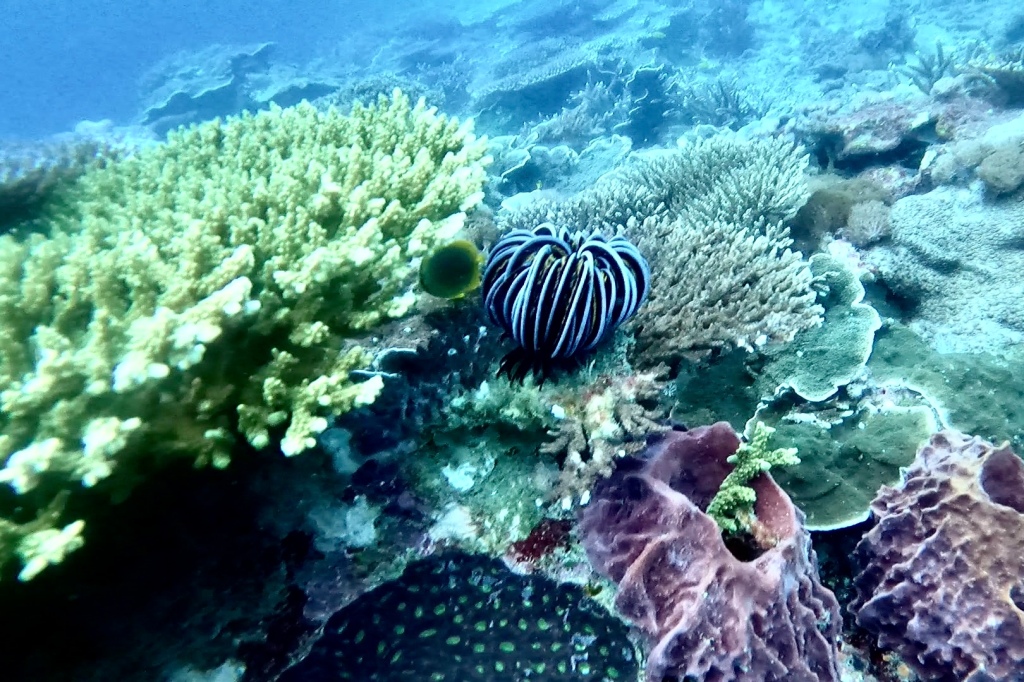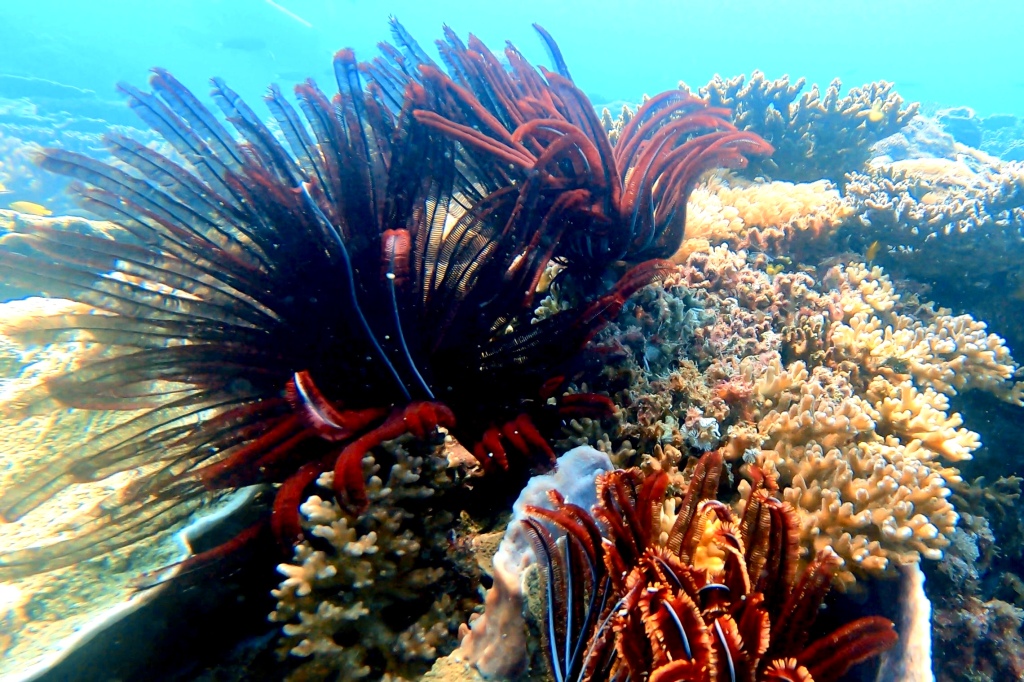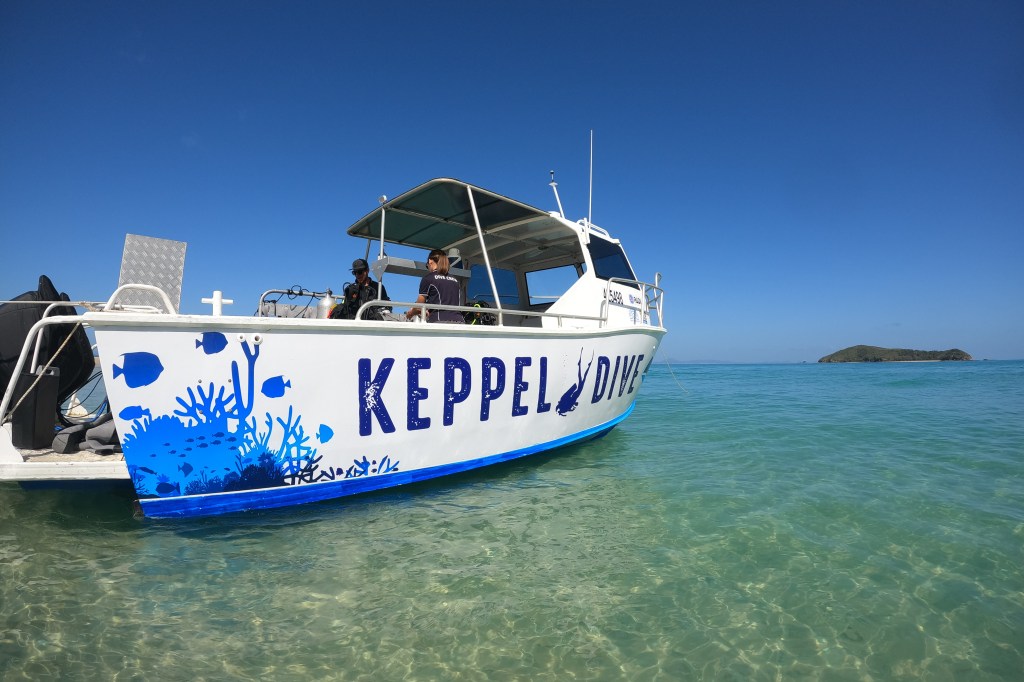As I step off the Keppel Island ferry and onto the glistening white sands of Great Keppel Island (Woppaburra), my whole being smiles. Unconditionally, I love the unspoiled natural beauty of Great Keppel Island, – The Keppels, and the Southern Great Barrier Reef. Anticipation always builds as I do the short beach walk to the little blue dive hut run by one of my favorite dive centers – Keppel Dives and Watersports. Friendly and relaxed yet extremely professional, the dive team knows The Keppels intimately.
I recently realized I spend much of my time diving the Southern Great Barrier Reef but have yet to write about the largely undiscovered treasure trove of dive sites. Great Keppel Island and The Keppels is where I transformed from a stressed middle-aged woman into a bubbly Senior Scuba Woman.
It’s Never Too Late to Become a Confident Scuba Woman – Take the Dive with Me, Tanya.
Table of Contents
- Scuba Dive into the Natural Beauty of the Keppel Islands
- Prepare for an Unforgettable Scuba Dive at the Stunning Egg Rock
- Appreciate the Delicate Balance of Marine Life at Barron Island
- Do a Drift Dive into the Underwater Beauty of Child Island
- Discover the Enchanting Secrets of Outer Rock’s Magical Waters
- Scuba Dive with Ancient Brain Coral at Wreck Beach
- Encounter a Breathtaking Array of Marine Life at Man and Wife
- The Keppels Rich Marine Biodiversity to Superb Underwater Vistas
Scuba Dive into the Natural Beauty of the Keppel Islands
The Keppel Islands are a group of 17 islands located on the Southern Great Barrier Reef. Unique underwater formations, diverse marine life, and vibrant corals mean exploring the many world-class dive sites is a truly joyous experience.
Great Keppel Island is the perfect starting point for Scuba Women wanting to spend a day or days scuba diving pristine reefs off the Capricorn Coast. Great Keppel Island is the largest of The Keppels, with North Keppel Island close by. Diving is good all year round, with visibility at its best between July and September.

For a day of diving from Great Keppel Island, contact Keppel Dives and catch a Keppel Island ferry from Rosslyn Bay, Yeppoon. Operating daily, both Keppel Konnections and Freeedom Fast Cats are a 30-minute ferry ride to Great Keppel Island.
Prepare for an Unforgettable Scuba Dive at the Stunning Egg Rock
Egg Rock stands out as a premier dive site amidst the remarkable underwater playground of The Keppels.
Egg Rock derives its name from its distinctive shape, which somewhat resembles an egg rising from the ocean depths. Bacon and Toast Islands keep this iconic rock formation company.
The underwater topography around Egg Rock is fascinating. Steep walls, crevices, and swim-throughs provide divers with a variety of environments to explore. These formations create homes for a plethora of marine life and offer stunning photographic opportunities.

Egg Rock is the deepest dive in the area at 30 meters. Currents can be strong, which means an abundance of life. Huge pelagic cruise by as scuba divers explore the rock walls, caves, and swim-throughs. Witness bull rays using the bommies as cleaning stations as fat Olive Sea Snakes weave between divers’ fins. Sweetlips, Coral Trout, Wobbegong Sharks, Turtles, and Red Emperors are commonly seen at Egg Rock.
Egg Rock is a dive site for the more experienced diver.
Appreciate the Delicate Balance of Marine Life at Barron Island
Soaring out of the ocean, Barron Island’s towering cliffs are begging to be abseiled or climbed, boulders balancing precariously on its rugged terrain. The alternative for a Scuba Woman is to dive into the water of the most easterly Keppel Island. Diving Barron Island offers a sense of adventure and exploration as Scuba Women navigate through exceptional geological formations.
With over 30 species of coral, including Gorgonians and Branching coral, Senior Scuba Divers forge a deeper appreciation for the delicate balance of marine life and the importance of preserving these underwater wonders for generations to come.

Exploring the fissures and overhangs of the coral formations often reveals hidden treasures, such as Bull Rays, Sea Turtles, and even the elusive Barramundi Cod.
One of the most exciting aspects of diving at Barron Island is the possibility of encountering larger marine species such as Trevally, Tuna, Barracuda, Batfish, and Spanish Mackeral. With depths ranging from 5m to 30m, Barron Island is suitable for both beginner and experienced divers.
Do a Drift Dive into the Underwater Beauty of Child Island
Shielded by Barron Island is the smaller cragier Child Island. Providing plenty of dive choices, Child Island is a great drift dive, finishing gently with picturesque coral gardens at 5 meters, a perfect safety stop.
Child Island is a stunning dive with lots of swim-throughs created by large boulders tumbling from the island, presumably over thousands of years. With good visibility, large plate corals create a surreal landscape. Currents can be strong, bringing plentiful fish life. Sea Stars wave in the current, and for macro enthusiasts, a large variety of Nudibranchs can be found.

A channel between the two islands known as The Gulch is an exhilarating dive as the stronger currents and deeper water attract Queensland Grouper, Barracuda, Trevally, Eagle Rays, and Spanish Mackeral.
Discover the Enchanting Secrets of Outer Rock’s Magical Waters
Outer Rock, a rocky outcrop to the east of Great Keppel Island, is one of my favorite dive sites. I always feel there is magic in the water when I dive at Outer Rock. There is a beauty and tranquility to the site. It was at Outer Rock where I first felt like a Scuba Woman and relaxed into the beauty of the underwater world. The dive sites around Outer Rock cater to divers of varying experience levels, ensuring that both beginner and seasoned divers can enjoy the wonders that these waters hold.

I always experience a thrill when we arrive at Outer Rock. I know I am going to enjoy a special dive. There is an abundance of dive sites around Outer Rock, generally without much current, with stunning coral formations, some of which include Ascidians and Gorgonians. A variety of anemones and anemones fish call Outer Rock home, as do Pipefish, Spanish Dancers, and Crayfish. In winter, listen for whale songs, and you may even see Humpback Whales as they migrate past.
For macro photography enthusiasts, Outer Rock is a treasure trove. Nudibranchs, Mantis Shrimps, and small crustaceans inhabit the nooks and crannies of the coral formations, presenting a fascinating world of intricate details that can be captured through the lens.
Scuba Dive with Ancient Brain Coral at Wreck Beach
Wreck Beach, found on the eastern side of Great Keppel Island, never disappoints. A shallow dive site with depths ranging from 4 to 12 meters, there is always plenty to see. Wreck Beach is home to an ancient brain coral, thought to be over 420 years old, standing almost 2 meters high. Giant clams, Spotted Rays, and a variety of soft and hard corals make Wreck Beach a pretty dive site suitable for all levels. Test your ability to see the hidden and search for Wobbegongs, Stingrays, and Epaulette Sharks camouflaging in their underwater homes.

Encounter a Breathtaking Array of Marine Life at Man and Wife
Located north of Great Keppel Island, the dive sites around Man and Wife range in depth from 6 meters to 25 meters, suitable for Senior Scuba Divers of all levels. The site features gentle slopes, coral gardens, and intricate rock formations. As divers descend, they’ll encounter hard and soft corals in a kaleidoscope of colors, providing shelter for an impressive array of marine life.
The name Man and Wife comes from two distinct coral formations that are closely intertwined underwater, resembling a married couple. The site is also sometimes referred to as Husband and Wife. The coral formations create an otherworldly landscape underwater, with crevices, canyons, and swim-throughs that provide an exhilarating diving adventure.

Scuba Women who visit the Man and Wife dive site can expect to encounter a breathtaking array of marine life. Hard corals, soft corals, and colorful Sea Fans provide shelter and sustenance for a myriad of marine creatures, from tiny Nudibranchs and colorful Reef Fish to larger species such as Turtles, Rays, and even Reef Sharks. It is common to see Painted Crayfish, Parrotfish, Batfish, and Angelfish.
Suitable for divers of all levels.
The Keppels Rich Marine Biodiversity to Superb Underwater Vistas
The Keppel Islands on the Southern Great Barrier Reef are located within the Great Barrier Reef Marine Park. The protection and conservation efforts in the region have helped maintain the health and vibrancy of the coral reefs, ensuring that generations of divers can continue to experience the beauty of this underwater world.

From the rich marine biodiversity to the captivating underwater landscapes, The Keppels dive sites offer a world of exploration and wonder for divers of all backgrounds. Whether you’re seeking adventure, relaxation, or a chance to connect with nature, these islands provide a unique and unforgettable journey into the heart of the ocean.
Keppel Dives are advocates for marine conservation and education, offering guided dives that provide information about the unique ecology of the area.
IT’S NEVER TOO LATE – TAKE THE DIVE WITH ME, TANYA – HELPING WOMEN DIVE CONFIDENTLY
Want to be part of our powerful community? Subscribe to receive the latest posts straight to your inbox and join other women scuba diving with confidence 🤿🤿🤿
If you liked this post or any other, please feel free to share using the buttons below.

